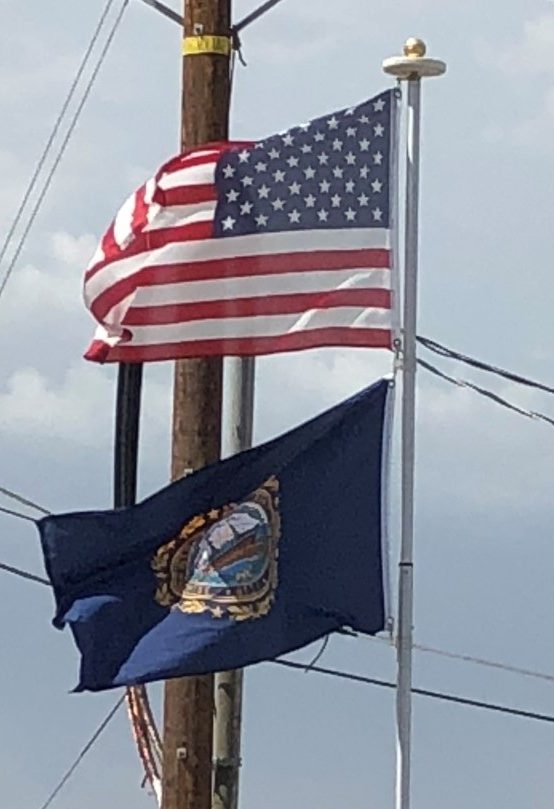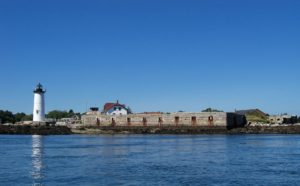
The United States Constitution was ratified by New Hampshire on June 21, 1788, when New Hampshire became the ninth state to do so.
Industrialization took the form of numerous textile mills, which in turn attracted large flows of immigrants from Quebec and Ireland. The northern parts of the state produced lumber, and the mountains provided tourist attractions. After 1960, the textile industry collapsed, but the economy rebounded as a center of high technology and as a service provider.
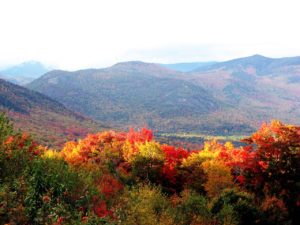
Economy:
Median household income in 2008 was $49,467, the seventh highest in the country.
New Hampshire agricultural outputs include: dairy products, nursery stock, cattle, apples and eggs. Its industrial outputs are machinery, electric equipment, rubber and plastic products and tourism.
New Hampshire experienced a significant shift in its economic base during the last century. Historically, the base was composed of the traditional New England manufactures of textiles, shoe making, and small machining shops drawing upon low-wage labor from nearby small farms and from parts of Quebec. Today, these sectors contribute only 13% of the state’s total manufacturing dollar value. These industries experienced a sharp decline due to obsolete plants and the lure of cheaper wages in the South.
Despite the declines in traditional industries, in 2013, New Hampshire had the nation’s lowest poverty rate at just 8.7% of all residents according to the Census Bureau.
Transportation:
New Hampshire has a well-maintained, well-signed network of Interstate highways, U.S. highways, and state highways.
Interstate 89 runs northwest from near Concord to Lebanon on the Vermont border.
Interstate 93 is the main Interstate highway in New Hampshire and runs north from Salem, on the Massachusetts border, to Littleton, on the Vermont border.
Interstate 95 runs north–south briefly along New Hampshire’s seacoast to serve the city of Portsmouth, before entering Maine.
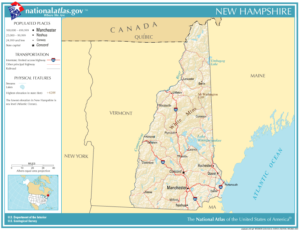
The busiest airport in New Hampshire by number of passengers handled is Manchester-Boston Regional Airport in Manchester and Londonderry, which serves the Greater Boston metropolitan area.
Long-distance intercity passenger rail service is provided by Amtrak’s Vermonter and Downeaster lines.
The Flag:
The flag of the state of New Hampshire consists of the state seal centered on a blue background.
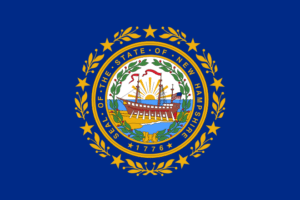
New Hampshire’s state seal depicts the frigate USS Raleigh and is surrounded by a laurel wreath with nine stars. The Raleigh is one of the first 13 warships sponsored by the Continental Congress for a new American navy, built in 1776, at Portsmouth. The wreath is an ancient symbol of fame, honor, and victory. The nine stars within the wreath show that New Hampshire was the ninth state to join the Union. The water stands for the harbor of Portsmouth, and in the yellow-colored spit of land is granite, a strong igneous rock, representing both New Hampshire’s rugged landscape and the sturdy character of her people.
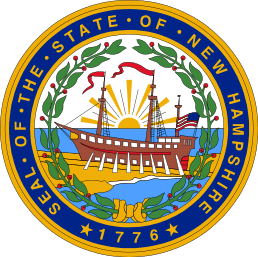
In 1784, when the present state constitution became
